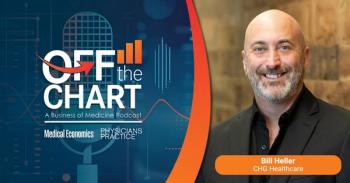
Easy guide to coding to collect what you are owed
How to avoid denials, collect what you are owed
An absence of documentation to support the codes assigned, not knowing what codes must be reported separately and an over-reliance on the
Further reading:
Payers’ ability to analyze large volumes of claims data means they’re able to easily identify any and all reasons to initiate an audit as well as delay or deny payment, says Kathleen Mueller, RN, CPC, president of AskMueller Consulting LLC, a healthcare consulting company.
Mueller worked recently with an internal medicine practice that had been notified by UnitedHealthcare that its evaluation and management (E/M) levels were high compared with peers. One week later, the practice received a 150-record request from the payer so it could look more closely at documentation.
This anecdote demonstrates why physicians need to pay attention to coding and documentation compliance-and not assume their EHR will take care of it, says Mueller.
Here are some of the services that payers frequently deny, along with expert advice on how to avoid payer scrutiny by using Current Procedural Terminology (CPT) codes correctly. Three of these services are also included in the Office of Inspector General’s (OIG) Work Plan for 2017, an annual report that summarizes the OIG’s new and ongoing reviews and activities to reduce fraud, waste, and abuse related to various U.S. Department of Health and Human Services programs and operations.
Popular on our site:
Payers often use this document to identify and target areas of physician billing vulnerabilities, so it’s important for physicians to know how to code properly so as to collect what they are entitled to and avoid falling under the payer microscope.
HIGH-LEVEL EVALUATION AND MANAGEMENT
When documented and coded appropriately, high-level E/M codes translate into greater reimbursement than their lower-level counterparts. However, these codes can also be a source of financial frustration when payers refuse to pay them-a trend that seems to be emerging as physicians rely more on electronic health records (EHRs), says Mike Strong, MBA, CPC, bill review technical specialist at SFM, a workers’ compensation insurer.
“The templates make it easier to get higher levels when the medical necessity might not be there,” says Strong, who provides E/M education to physicians. Physicians end up foregoing SOAP (subjective, objective, assessment, and plan) documentation methods in favor of simply answering questions prompted by the template that may be completely unrelated to the patient's presenting problem, he adds.
Strong cites the example of an established patient with asymptomatic diabetes who presents for a blood sugar recheck and prescription refill. A general diabetes template in the EHR may prompt the physician to complete a full review of systems and an eight-organ system exam when medical necessity doesn’t justify these services, says Strong.
If physicians create their own templates, they shouldn’t assume that specific diagnoses automatically justify a certain level of E/M service, says Raemarie Jimenez, CPC, CPC-I, vice president of membership and certification solutions at AAPC, an organization representing professional coders, billers, auditors, compliance professionals and documentation specialists.
For example, some physicians believe that every new patient with abdominal pain justifies reporting CPT code 99204, so they develop an abdominal pain template that supports a level four E/M code. Physicians shouldn’t be prompted to document a level of service, says Jimenez. Instead, they should document elements that support medical necessity, she adds.
Beware of templates that pre-populate information from previous visits or require physicians to check “all others negative” when completing the review of systems, says Strong. This can lead to artificially high levels of E/M services because the EHR simply counts the information regardless of whether the physician performs the work, he adds.
Copy-and-paste functionality can also cause problems because physicians often don’t take the time to validate whether information is relevant to the current visit and override the suggested code when it doesn’t seem accurate given the patient’s presenting problem, says Mueller.
“It shouldn’t be 10 years’ worth of information that doesn’t impact anything for today’s visit. If it’s old information that has nothing to do with the current visit, then it’s just past history,” she adds.
Reserve CPT codes 99215 and 99205 for patients at significant risk for loss of life or bodily function, says Kim Huey, MJ, CHC, CPC, an independent coding and reimbursement consultant. This could include, for example, patients with symptoms of an impending heart attack or a severe exacerbation that requires additional workup or an immediate referral to a specialist or the hospital, she adds.
Also, look at E/M levels for the same patient over time. Payers generally want to see a slow progression downward in the levels, says Strong. For example, when an established patient presents with an acute exacerbation of COPD, a physician might bill CPT code 99215. However, the payer wouldn’t expect the physician to continue to bill that code for each subsequent visit over the next few months.
PROLONGED SERVICES
While payment for prolonged services has gone up, the bad news is that these services are also on the OIG’s Work Plan for 2017, in which the OIG states that prolonged services are considered “rare and unusual.” This means physicians who bill these services must have a clear and compelling reason to do so, says Jimenez. “If you’re going to bill these services, there needs to be a summary of what you were doing to prolong that care,” she adds.
Further reading:
With that said, many commercial payers continue to deny payment for these codes because they bundle them into the payment for the E/M service, says Mueller. Rather than deny claims outright, some payers (including Medicare) may require additional documentation before rendering payment, Mueller adds. They’re typically looking for proof of the time spent rendering the service and what tasks the physician performed during that time.
She provides this example of documentation that would satisfy Medicare requirements for face-to-face prolonged services: Patient presents with an acute exacerbation of asthma. Patient stayed in the office for an extra 65 minutes to receive intravenous medication and undergo monitoring until stable.
To correctly bill for this scenario, Mueller suggests separating the documentation for the prolonged service from the rest of the visit with a note. Then report CPT code 99354 and the appropriate E/M code with modifier -25.
She suggests including the start and stop time for the prolonged service in box 19 on the CMS-1500 claim form (e.g., 10:40 a.m. to 11:45 a.m.). This documentation may prevent the payer from asking for additional information.
Jimenez agrees that documentation of the time spent is critical. “Whenever it’s a time-based service, I always recommend that the provider include the start and stop times because then if you’re audited, there’s no question about the time it took,” she adds.
Physicians also need to remember that prolonged services don’t include care plan oversight, anticoagulant management, medical team conferences, online medical evaluations or other non-face-to-face services that have more specific CPT codes, says Jimenez.
Non-face-to-face prolonged services could include extensive record reviews or communication with other providers, says Huey. These prolonged services must be related to another E/M service that has occurred or will occur, and to ongoing patient management. Even though this isn’t stated in CPT, Huey says Medicare requires as a prerequisite for payment that Ânon-face-to-face prolonged services are rendered on the same date of service as the E/M code or on a date of service thereafter.
Remember that prolonged services begin once the typical time (per CPT guidelines) has elapsed for the E/M service, says Mueller. For example, CPT code 99214 usually requires 25 minutes. This means physicians shouldn’t bill for prolonged services unless they provide an additional 30 minutes or more of evaluation and management. Medicare provides a guide for helping physicians determine the threshold time for billing CPT codes 99354 and 99355 with an outpatient visit code at bit.ly/prolonged-codes. Note that this guide includes a link to updated coverage information at http://bit.ly/MM9905.
However, commercial payers may have their own says Strong. For example, if a physician spends 60 minutes counseling the patient, a payer may require the physician to report CPT code 99215 (which includes 40 minutes or more of counseling and coordination of care) rather than CPT code 99214 with a prolonged services add-on code, he adds. Practices should check with a payer to determine its policy.
For the rest, click the links below!
Are your CCM codes correct?
Is advanced care planning billable?
How to avoid TCM coding denials
Newsletter
Stay informed and empowered with Medical Economics enewsletter, delivering expert insights, financial strategies, practice management tips and technology trends — tailored for today’s physicians.








